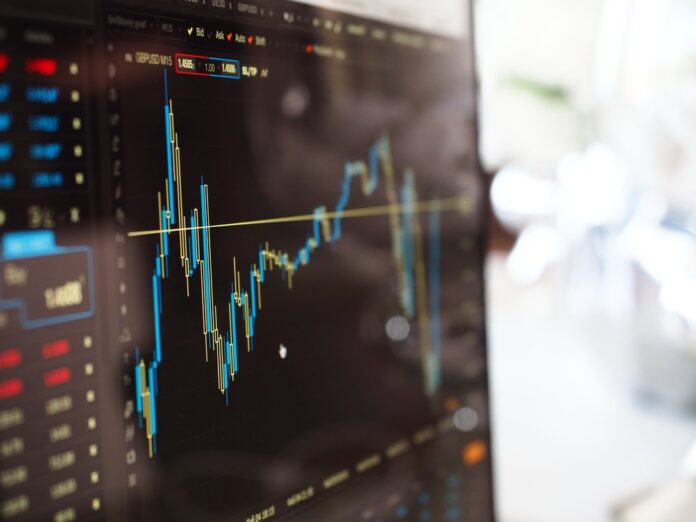
In this article, I will explain the important investing metric known as the dividend yield. The dividend yield sounds complex however it isn’t; it’s simply the sum of a company’s annual dividend payments divided by its share price, represented as a percentage.
What is dividend yield?
This percentage figure then represents the dividend only return of a stock investment. Let’s say for an example, if a company paid out 59 cents per quarter in dividends. We would multiply 59 cents by four to get its annual dividend payment. Spoiler, it’s $2.36. Now, if its current share price was $48.64, then we would then calculate its dividend yield like this.
If a company pays out a monthly dividend, we would simply multiply its monthly dividend payment by twelve to get its annual dividend payment. Then we divide that number by the current share price. Then we multiply the resulting quotient by 100 to get our annualized dividend yield.
So, looking at this formula further, you may notice that when the dividend is not raised or lowered from previous dividends, then the yield will actually rise when the price of the stock falls and it will fall when the price of the stock rises. This happens because the dividend yield changes with the stock price. As a result, it can often look unusually high for stocks that are falling quickly. This point leads us to an important distinction that can often confuse investors.
Dividend yield versus yield on cost
As discussed, dividend yield is the dividend payout based on the current price and is simply one of many indicators that investors use to estimate the forward returns that an investment would provide them from its current price. However, yield on cost takes the current dividend payout and divides it by the purchase price of the investment.
That is, the cost of the investment if several investments over time have been made into a particular stock, the purchase price is calculated as the weighted average purchase price commonly referred to as the cost basis in contrast to the dividend yield, which changes with both the current price and the current dividend payout. This focuses only on the forward- looking prospect of an investment.
Yield on cost is independent of the current share price and only changes with the company’s dividend payout. It is therefore a backwards looking investment metric, in that it gives investors insight into the income performance of an existing investment, however gives relatively little insight into its future return prospects.
Therefore, many investors focus on the dividend yield and put little emphasis on yield on cost when comparing dividend yields between various securities. It is vital that you ensure you are comparing data from the same time periods, in order to ensure a fair assessment. For example, some financial websites report the dividend yield based on the sum of the trailing 12-month dividend payments, whereas others simply use the most recent dividend payment and annualize it.
Still others use the most recent declared dividend payment however, which has not yet been paid and annualized that number often referred to as the forward dividend yield. Finally, some companies pay out what are referred to as special dividends which are often irregular in frequency and size and are therefore classified differently from the more consistent quarterly or monthly dividends that a company pays out.
Therefore, if you are serious about making money work for you, it is important to check for these as well as some websites include them in determining the dividend yield while others do not. While many investors love dividend payments and for great reason due to the psychological and financial benefits of regular cash flow returns on investments, they are not the only form of investment return in the stock market.
Capital gains
Stock prices can rise leading to returns called capital gains which combined with the dividend return generate a stock’s total return. Stock prices rise for two main reasons, being increased earnings power and increased market sentiment. Every dollar of profit that a company retains, ie does not pay in dividends to its shareholders, is a dollar that it can reinvest to grow its businesses future earnings and or repurchase outstanding shares which has a similar effect of increasing earnings per share as the earnings power of each share increases, and so does its capacity to pay out more dividends in the future to shareholders.
Thereby increasing its value over the long term, this causes the share price to rise producing additional returns beyond dividends known as capital gains. In addition to rising earnings power an improved perception of the company’s long-term growth potential competitiveness viability or stability can cause its valuation multiple ie the current share price divided by the earnings per share, to expand since its earnings per share are considered to be of higher quality than they were previously when its future outlook was bleaker.
Since the valuation multiple has increased while the earnings per share have remained constant, the share price will rise also generating capital gains. As the share price rises, the dividend yield however not the yield on cost will fall, since its dividend safety and/or growth potential is now viewed in a more favorable light, making each dollar of dividends from the company higher quality than it was previously viewed to be by the marketplace.
Don’t focus on one number
For these reasons, it is important for investors to not simply focus on investments that offer the highest dividend yields. While high dividend yields do mean higher short-term cash income yields that are too high often place an excessive burden on companies since they do not retain enough cash flows to continue to grow and strengthen their business. As a result they may be unable to compete with faster growing competitors that retain and invest more of their earnings and lose market share as a result.
This would have an adverse impact on the total return of an investment, by causing the higher yielding company’s valuation multiple to shrink and even reduce its earnings per share. In worst-case scenarios, the dividend payout might even be cut or altogether suspended, which almost always causes the valuation multiple to fall rapidly, leading to steep capital losses for investors.
A classic recent example of this principle was a certain geospatial software company. It was paying out nearly all of its earnings, leaving little left over for growth investments. As a result, it failed to adequately diversify its assets away from its primary customer windstream.
While it paid out a dividend that yielded in the teens and the business metrics appeared sound, when its primary customer declared bankruptcy a month ago, they were left with little choice however to dramatically cut its dividend and shareholders saw the market price of their shares cut in half.
In hindsight, it would have been far better for the company to pay a lower dividend yield and invest more of its earnings into growing the business to the point where the windstream bankruptcy would not have caused such a shock to its business model.
To review the dividend yield, is a reflection of the forward dividend return that a certain investment will provide as its current price.
Be prudent when choosing stock
However, there are numerous ways of determining dividend payout so investors should check the company’s dividend data for themselves when comparing dividend yields between different investment options.
Additionally dividends are not the only source of investment return, and in fact can often seduce investors into picking high-risk investments so it is prudent to conduct a holistic analysis of a business, rather than just picking it based on the attractiveness of its dividend yield.





